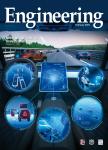An Additive Manufacturing Approach that Enables the Field Deployment of Synthetic Biosensors
一种可实现合成生物传感器现场部署的增材制造方法作者机构:Department of Biological Systems Engineering Virginia Polytechnic Institute and State University Blacksburg VA 24061 USA Department of Bioengineering University of Pittsburgh Pittsburgh PA 15219 USA
出 版 物:《Engineering》 (工程(英文))
年 卷 期:2019年第5卷第1期
页 面:173-180页
核心收录:
学科分类:0810[工学-信息与通信工程] 0830[工学-环境科学与工程(可授工学、理学、农学学位)] 0808[工学-电气工程] 07[理学] 0817[工学-化学工程与技术] 08[工学] 0807[工学-动力工程及工程热物理] 0805[工学-材料科学与工程(可授工学、理学学位)] 0703[理学-化学] 0812[工学-计算机科学与技术(可授工学、理学学位)]
基 金:support from funding from federal agencies of the United States including, the National Science Foundation (1709238) funding from Office of Naval Research (N00014-17-12306 and N00014-15-1-2502) the Air Force Office of Scientific Research (FA9550-13-1-0108)
主 题:Synthetic biology Additive manufacturing Biosensors
摘 要:The tools of synthetic biology can be used to engineer living biosensors that report the presence of analytes. Although these engineered cellular biosensors have many potential applications for deployment outside of the lab, they are genetically modified organisms (GMOs) and are often considered dangerous. Mitigating the risk of releasing GMOs into the environment while enabling their use outside a laboratory is critical. Here, we describe the development of a biosensing system consisting of a synthetic biological circuit, which is engineered in Escherichia coli that are contained within a unique 3D-printed device housing. These GMOs detect the chemical quorum signal of Pseudomonas aeruginosa, an opportunistic pathogen. Using this device, the living biosensor makes contact with a specimen of interest without ever being exposed to the environment. Cells can be visually analyzed in the field within culture tubes, or returned to the lab for further analysis. Many biosensors lack the versatility required for deployment in the field, where many diseases can go undiagnosed due to a lack of resources and equipment. Our bioassay device utilizes 3D printing to create a portable, modular, and inexpensive device for the field deployment of living biosensors.



